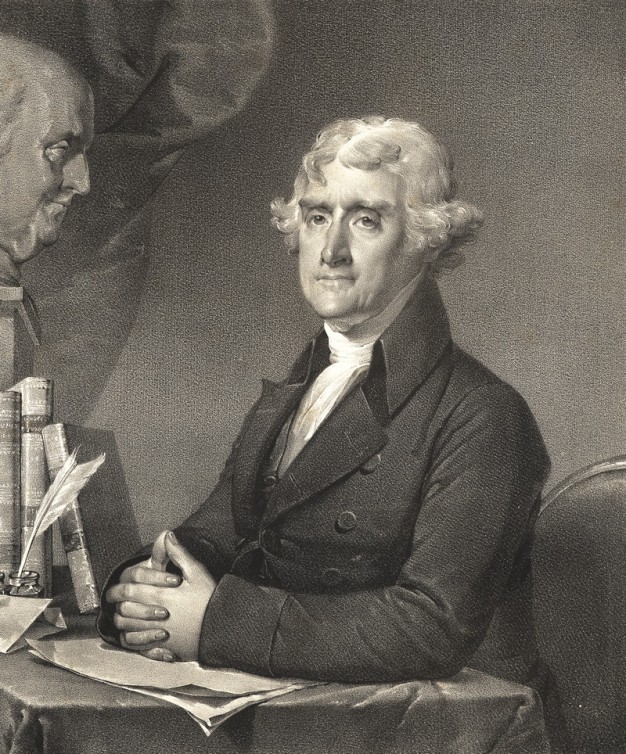Emblematic Franklin
Benjamin Franklin was represented in portraits in nearly every medium: painting, prints, sculpture, medallions, ceramic, textiles, etc. According to Franklin himself, his face was “as well known as that of the moon.” During his own lifetime, Franklin – and his portrait – became a symbol of American science, innovation, and civic leadership.
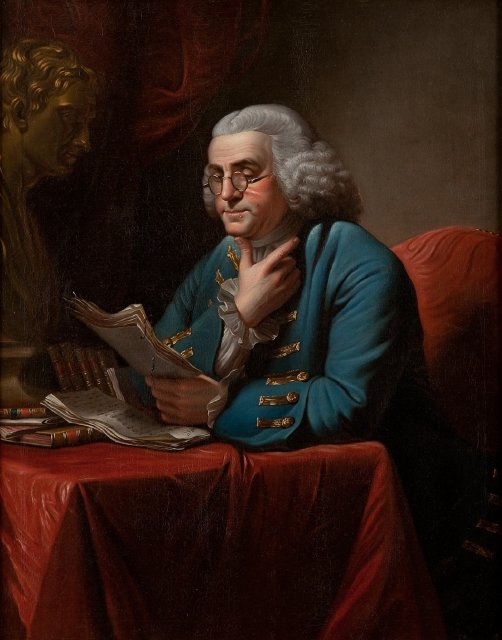
The American Philosophical Society was among the institutions that collected portraits of Franklin, its founder and founding President. Today, there are portraits of Franklin in public spaces throughout the APS. A large oil portrait of Franklin hangs in Franklin Hall, busts of Franklin sit in the Reading Room and the Board Room in Library Hall, and of course, a statue of Franklin graces the exterior of Library Hall. The busts and statues of Franklin emphasize his iconic status with their size and heft. The portrait in Franklin Hall, donated by the artist Charles Willson Peale, features Franklin sitting at a desk with papers, books, and a portrait bust of Sir Isaac Newton looking over him. Newton was one of Franklin’s role models, a champion of the scientific method and one of the most prominent English natural philosophers of the 17th and 18th centuries. The bust of Newton was used in Franklin’s portrait as a symbol of scientific reasoning and success.
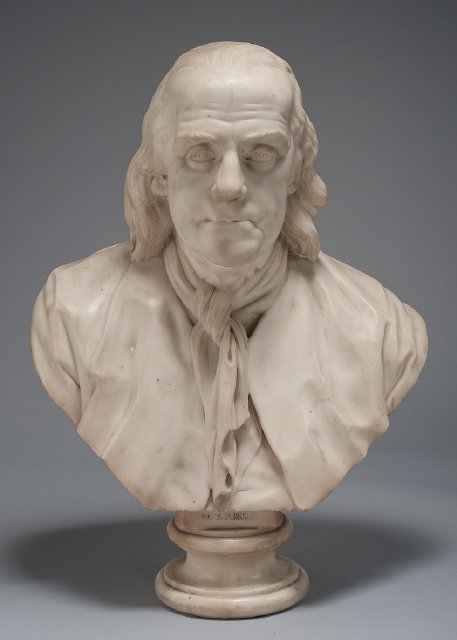
Several of the APS’s leaders have opted over the centuries to be portrayed in their own portraits with likenesses of Franklin in the background, much like Franklin appeared with Newton in his portrait. When used as an emblem in other people’s portraits, Franklin’s image suggests that the subjects descend from a distinguished line of American scientists and civic leaders. Let’s look at a few of the portraits in the APS collection that feature Franklin’s likeness.
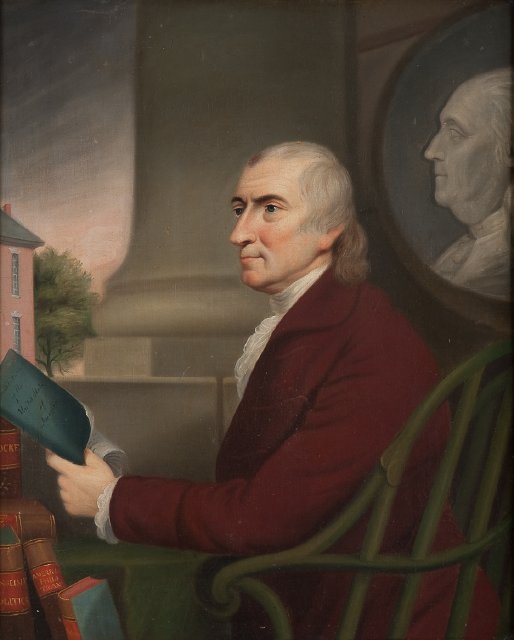
Samuel Vaughan, who designed Philosophical Hall and was an important Member who helped revive the APS in the 1780s and 1790s, was painted by Robert Edge Pine. Vaughan sits in profile directly in front of a bas-relief profile of Franklin while reading the Constitution of the United States and next to a stack of philosophical texts and a copy of the Transactions of the American Philosophical Society. A corner of Philosophical Hall (still under construction at the time) is visible in the background. The portrait links Franklin and Vaughan’s intellectual pursuits and memorialized their contributions to the APS. Franklin’s profile is part of the structure behind Vaughan, acting as a monument to Franklin. This portrait was painted during Franklin’s lifetime, emphasizing how his image had reached symbolic importance even before his death.
Thomas Jefferson (APS President 1797-1814) was represented in the print portrait illustrated at the top of this page. It was copied from a painting by Gilbert Stuart and was published as part of the 1828 “American Kings” print series featuring portraits of the first five U.S. Presidents. The composition is very similar to the portrait of Franklin by Peale. Both the men sit at a table with books and papers with a curtain on the left side of the painting. However, a bust of Franklin replaces that of Newton. Jefferson was a champion of American science, seeking to prove that America could produce scientists and scholarship as worthy as those from Europe. The replacement of Newton, an icon of English science, with Franklin was a calculated choice. Franklin was the ultimate American man of science. The portrait also joins the pursuit of science with political leadership.
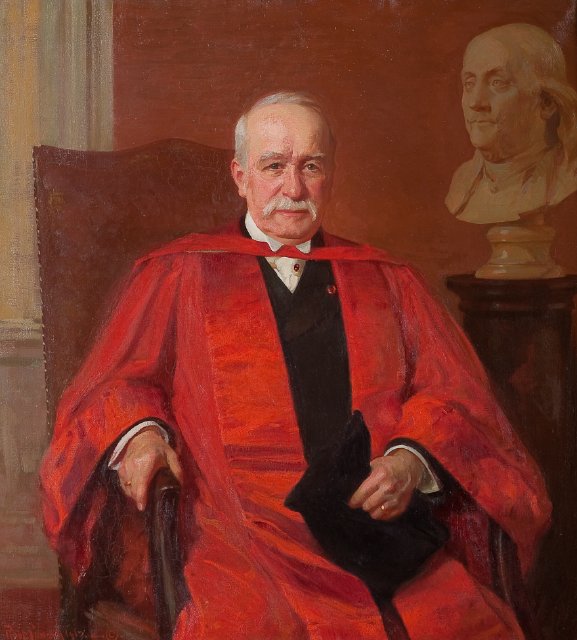
Almost 100 years later, William Williams Keen (APS President 1908-1918) was painted by Robert William Vonnoh for the APS. Keens was a Philadelphia native who had a distinguished medical career. In his likeness, he wears scarlet gowns from the University of St. Andrews and sits in front of a bust of Franklin. Both men received honorary Doctor of Law degrees from the Scottish university. The portrait draws a connection between the two men and emphasizes their international academic careers.
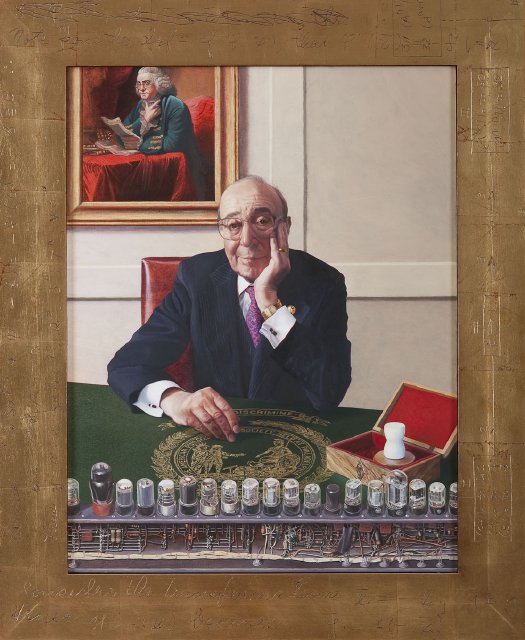
Herman Goldstine (APS Executive Officer 1985-1997) was painted by Jon R. Friedman (APS 2016) and appears to be seated in Franklin Hall in front of the Franklin oil portrait. The portrait mimics the Franklin portrait’s composition. Instead of sitting at a table with papers and books, Goldstine sits at a table decorated with the APS seal, with a gavel and percussion piece, and with the ENIAC (Electronic Numerical Integrator and Computer), the first electronic digital computer that Goldstine helped develop. Goldstine’s handwritten notes are incised on the wooden frame. The scientific data is presented in traditional written form, as it was in Franklin’s day, and in contemporary form with the computer. Rather than the Newton bust, the Peale portrait of Franklin is over his shoulder. Goldstine’s portrait shows the evolution of scientific practice at the APS from Franklin to Goldstine.
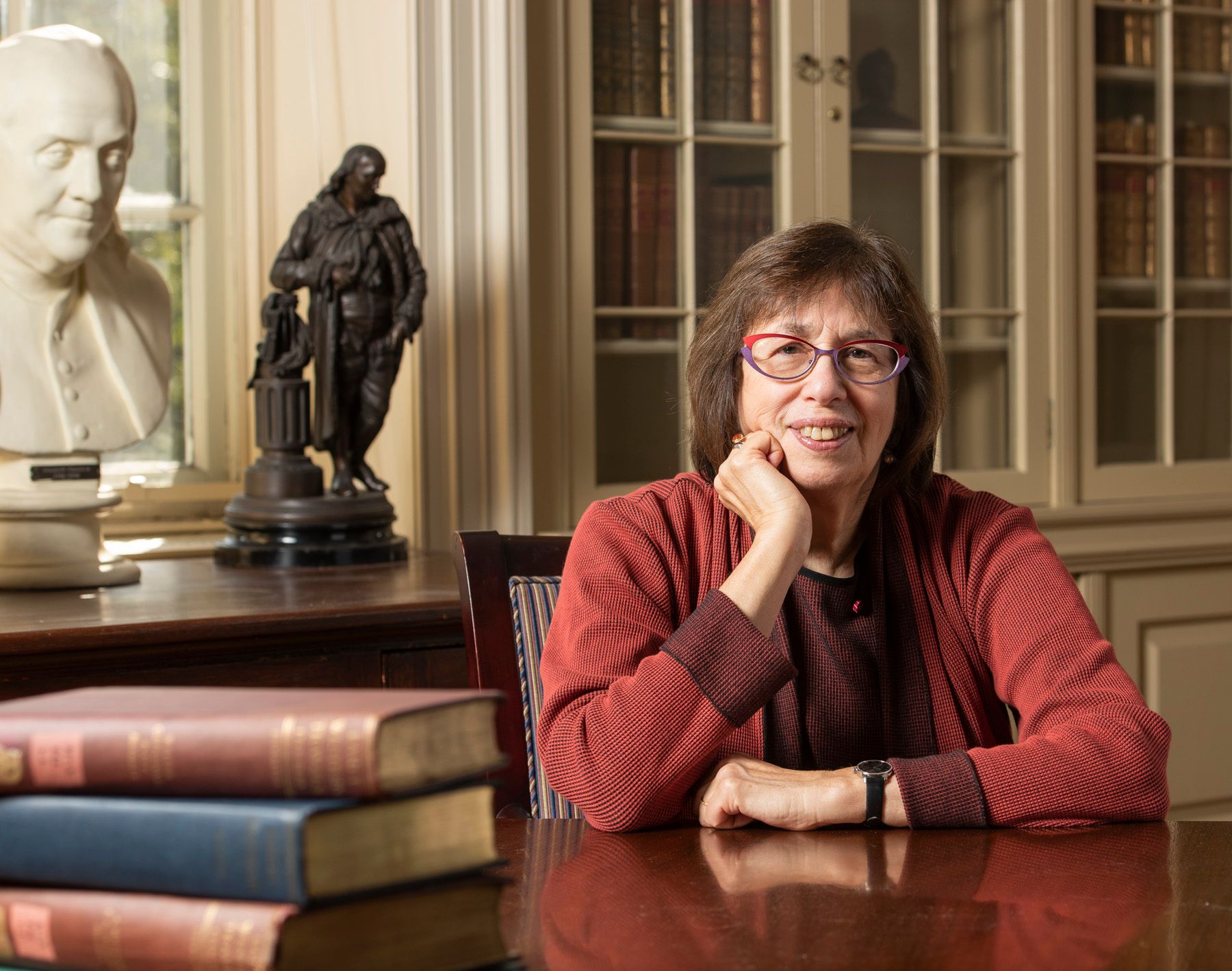
The current APS President, Linda Greenhouse, was photographed just last year in the Library Board Room with a Franklin bust and statuette behind her, continuing a long tradition of including the first APS President in portraits of APS leadership.
All of the likenesses included in this post reveal how portraits can become symbols over time. Franklin’s portraits have become so recognizable and emblematic that when they are included in other people’s portraits, viewers immediately associate the subject with the qualities and accomplishments that Franklin was famous for – American science, innovation, and civic leadership. At the APS, of course, he also represents the founding of the Society and the long line of distinguished Members who are his intellectual descendants.


